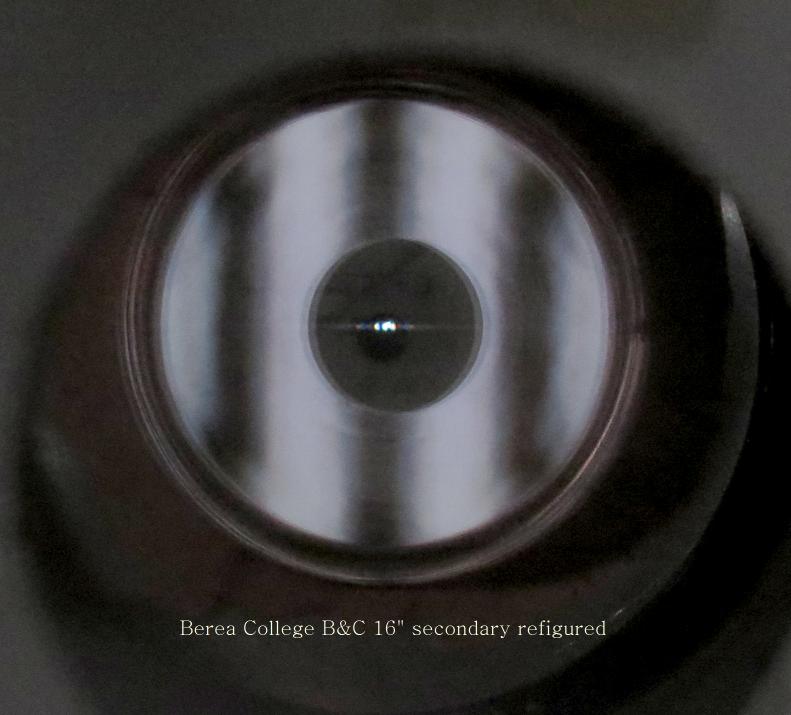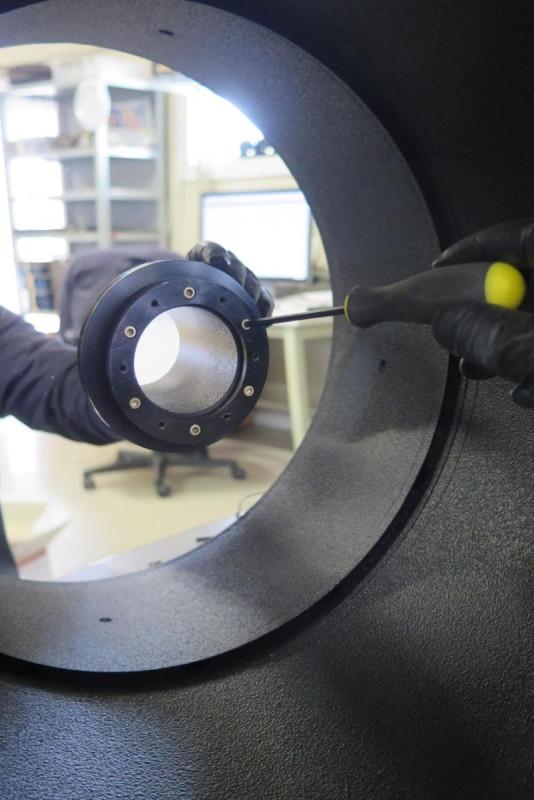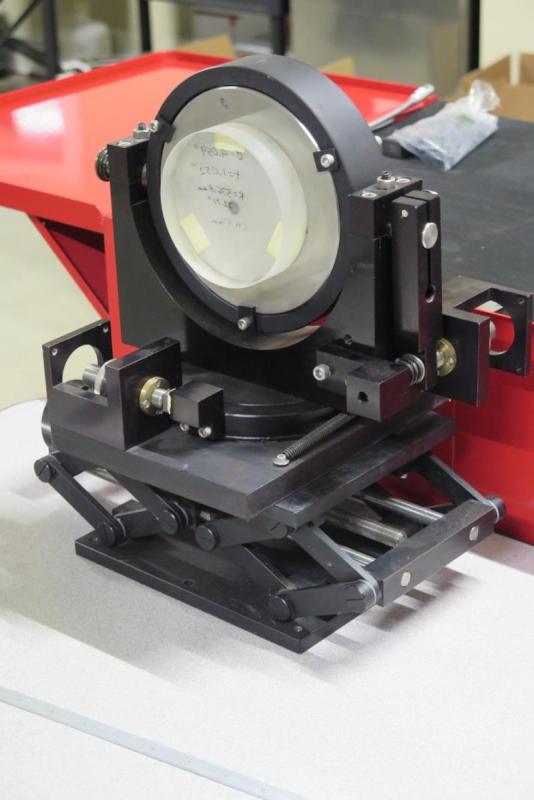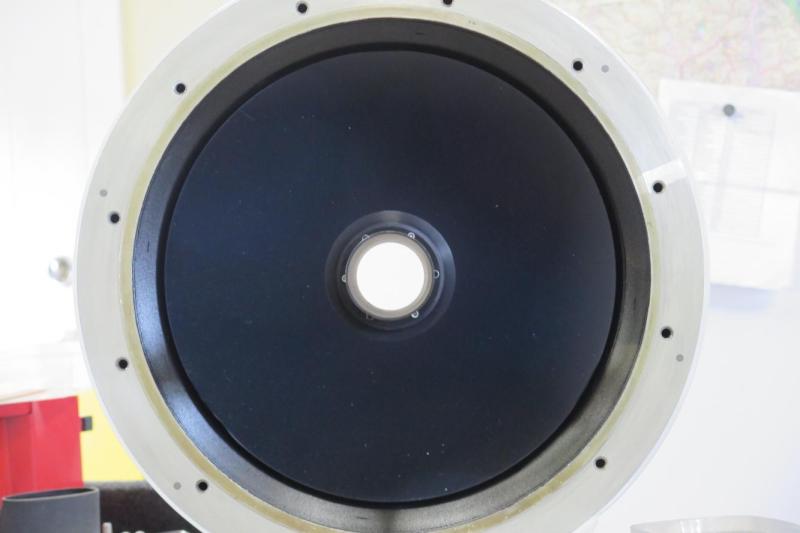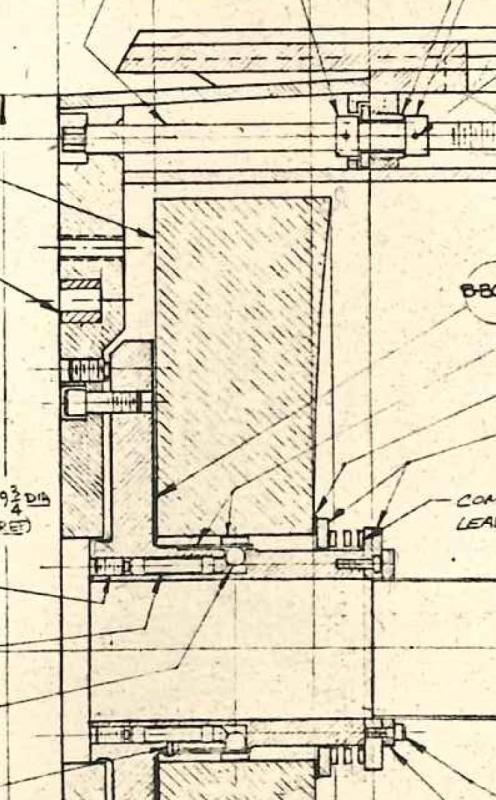Berea College 16" Boller and Chivens Resque |
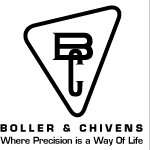
Berea College 16" Boller and Chivens Resque |

It all started March 26, 2021, Jeff Hutton of Berea Kentucky posted on Cloudy Nights that he had been asked to help dispose of a 16" Boller & Chivens cassegrain for Berea College in Kentucky. (and 14 foot Ash dome)
There was a lot of back and forth and the school changed their mind several times about what they were going to do. In the end, it came down to paying for the crane to remove the equipment or it would go in the land fill with the rest of the building.
Peter Ceravolo of Canada wanted the telescope and I had the equipment and knowledge to deal with the dome. So, Peter paid for the crane, I spent a week helping getting the scope packed up for shipping. Then I took the dome apart and took it home.
This is the story of that endever and documentation of the B&C-16 restoration done by Peter.
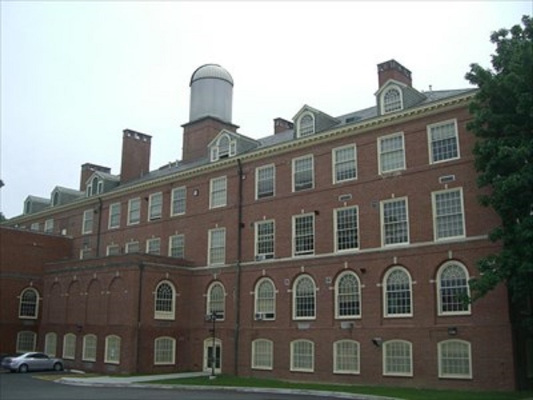
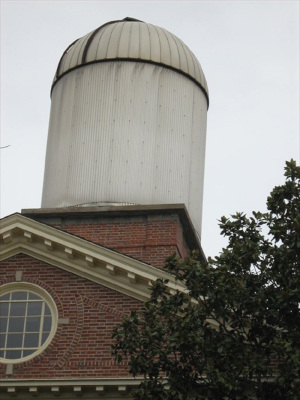
|
|
|
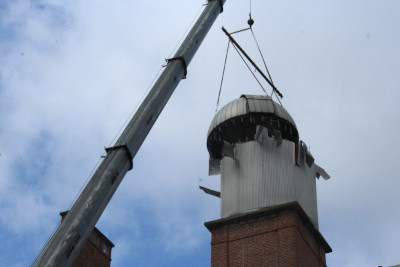
|
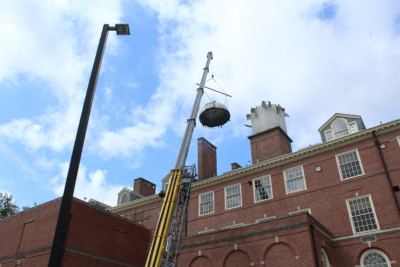
|
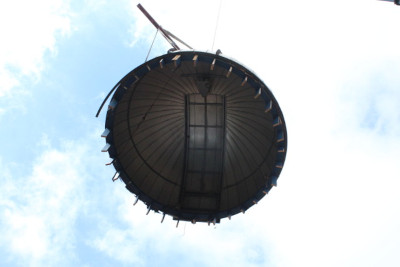
|
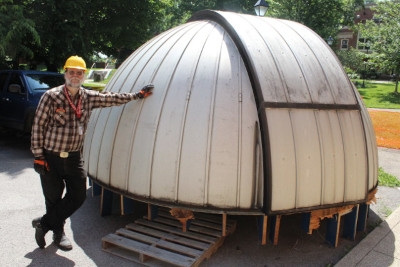
|
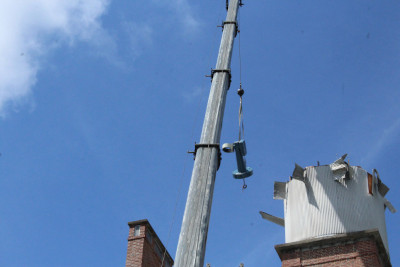
|
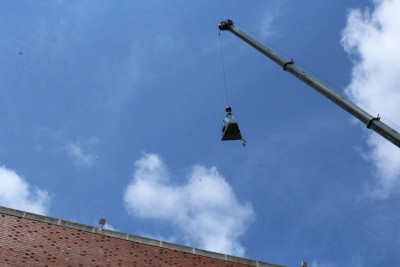
|
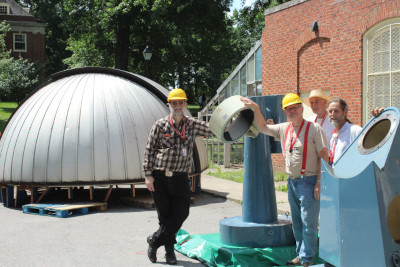
|
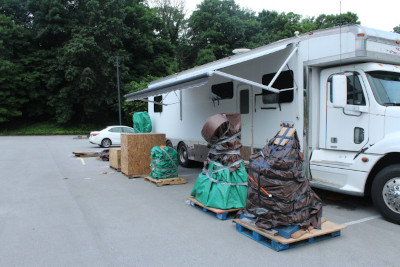
|
|
First assemble the OTA and test the optics.
They weren't too bad, a little under-corrected and a little rough.
The clipped aperture was a bit weird, the baffle tube must be out of alignment. More on that later.
The primary had the usual bird crap and dust on it, but the surface was not otherwise damaged. Both mirrors needed recoating. Once stripped of the old aluminum I set up independent autocollimation tests for both mirrors to see which of the two was causing the roughness and undercorrection. No surprise, it was the secondary.
|
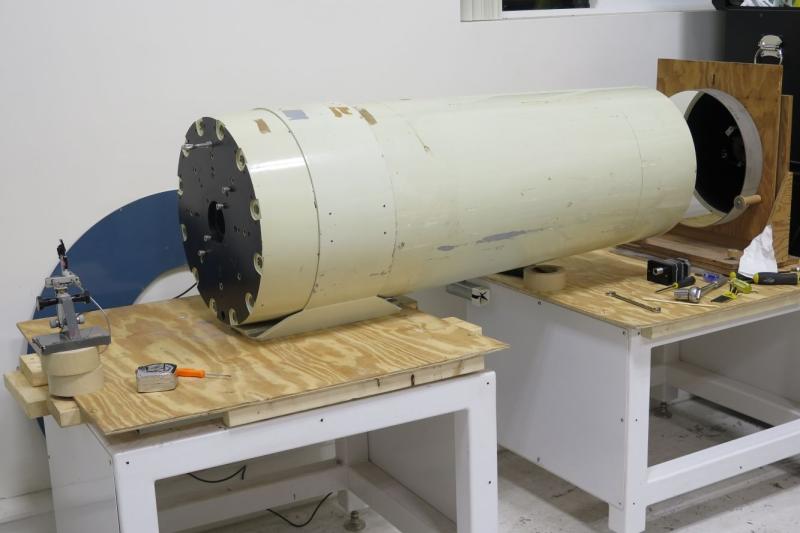

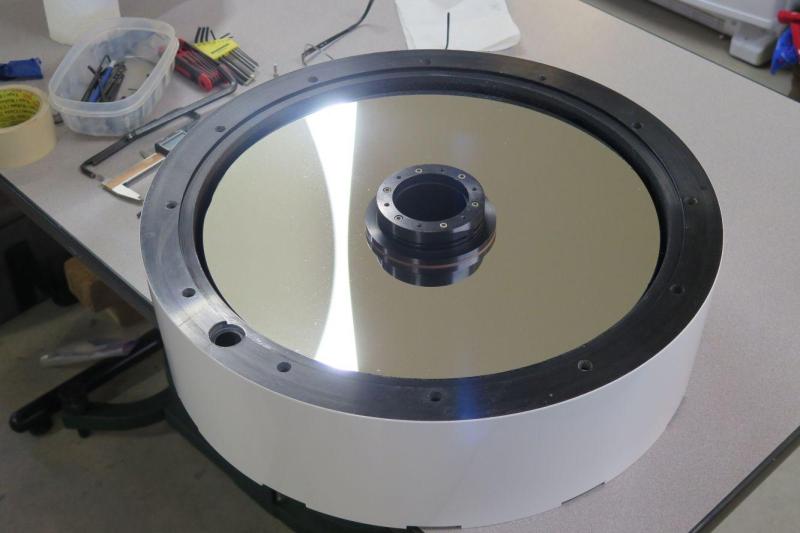
|
|
For the primary I used a double bounce (off the flat) autocollimation set up.
In the photo below the Ronchi tester is behind the primary.
The big f/3 mirror has a wonderfully smooth and well corrected parabolic figure right out to the edge. A pro job. Unfortunately I could not record the test results because the camera could not accommodate f/3 beam. |
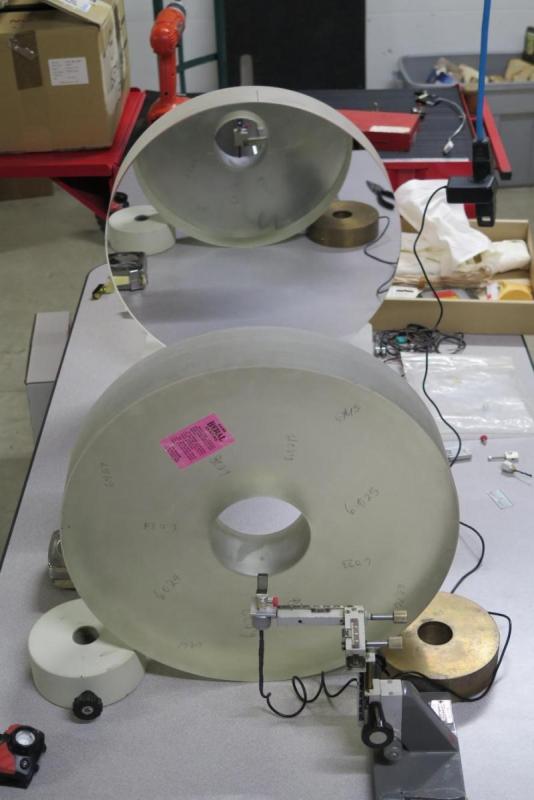
|
| The B&C's secondary assembly is the polar opposite in terms of apparent finesse when compared to the primary support. |
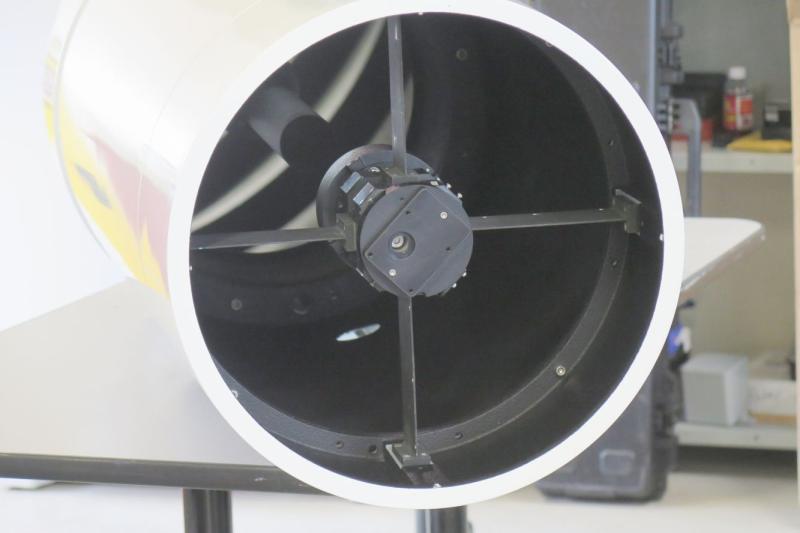
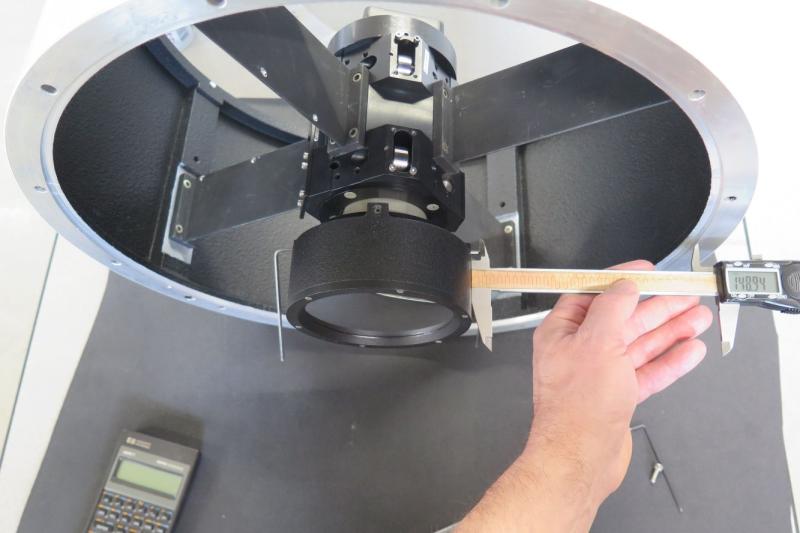
|
|
The focusing is accomplished by changing the secondary to primary spacing, like a conventional SCT.
But unlike an SCT's the secondary moves, not the massive primary. The secondary cell is mounted to a piston supported by 8 bearings, very much like a Crayford focuser. |
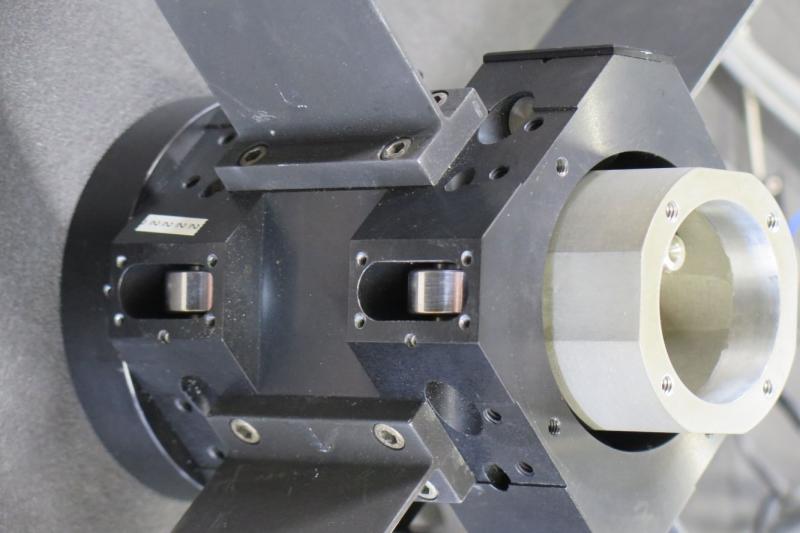
|
| The mirror sits in a ring with plastic support pads bolted to the cell. |
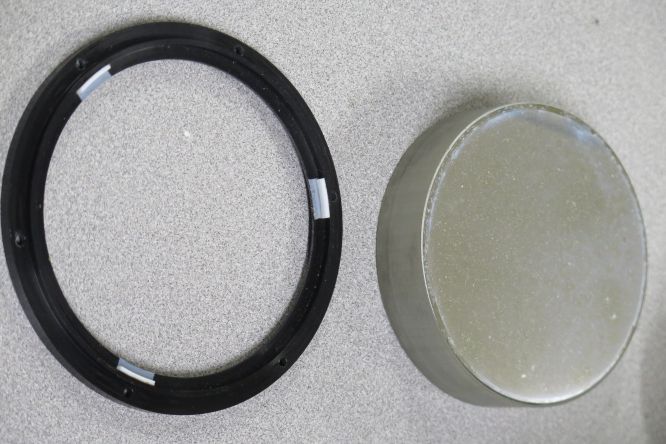
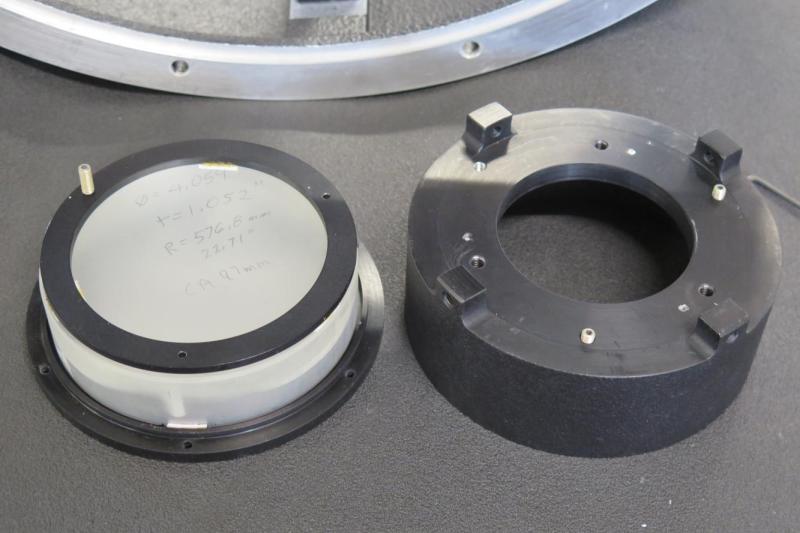
|
|
One thing about the primary assembly warrants special attention, the long
and apparently small diameter baffle tube.
At first glance one wonders how much vignetting there must be given the 3" diameter baffle tube is so long. After making all the appropriate measurements I laid out the system in CAD software and found that, because of the F/18 convergence cone, there is minimal vignetting over a 1/2 degree field of view. A 1/2 degree field may not sound like much, but at 7,300mm focal length it will cover a large format CCD detector like the 4kx4k KAF16803. But what really sets this baffle tube apart form anything I've seen before is the fact that one must "collimate" it so it does not clip the converging light. This is what I saw when I first assembled the scope: |
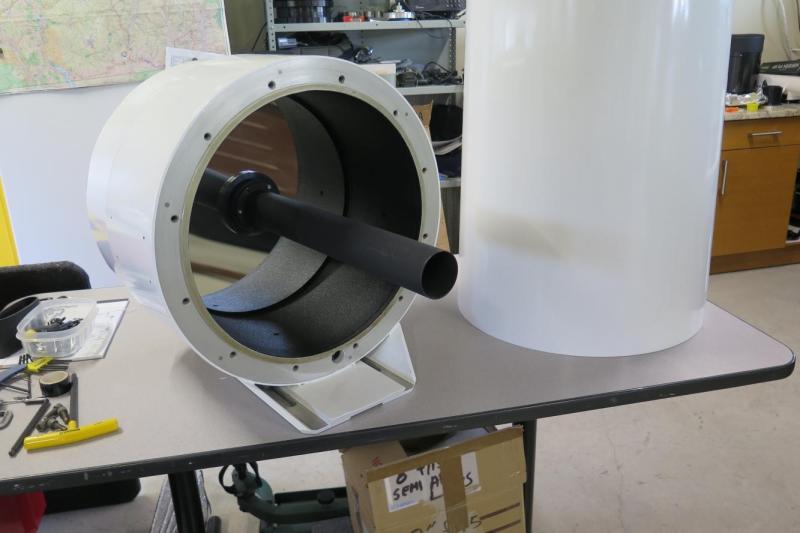
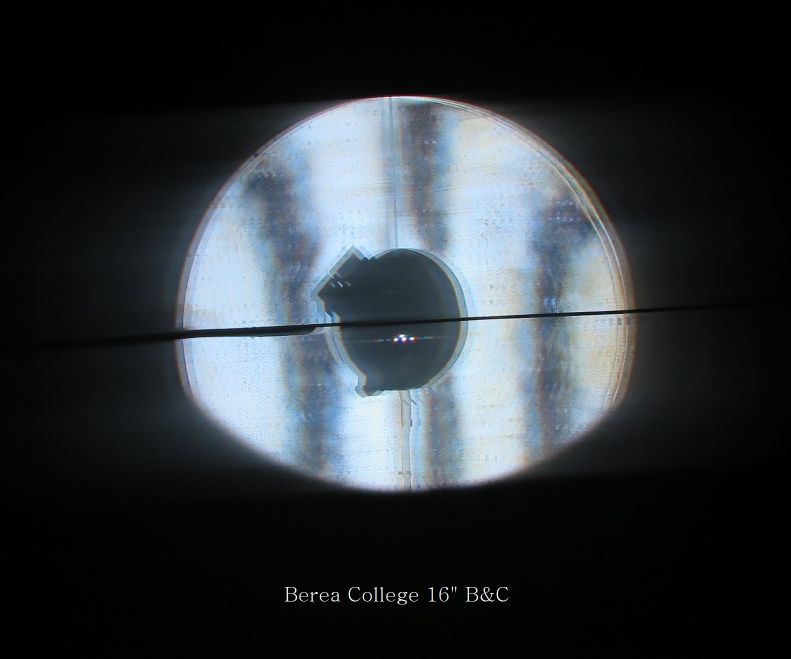


|
|
|
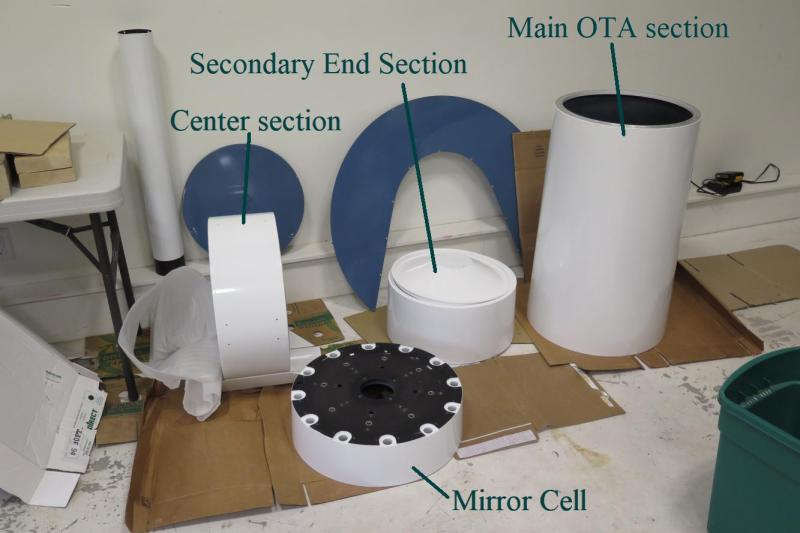 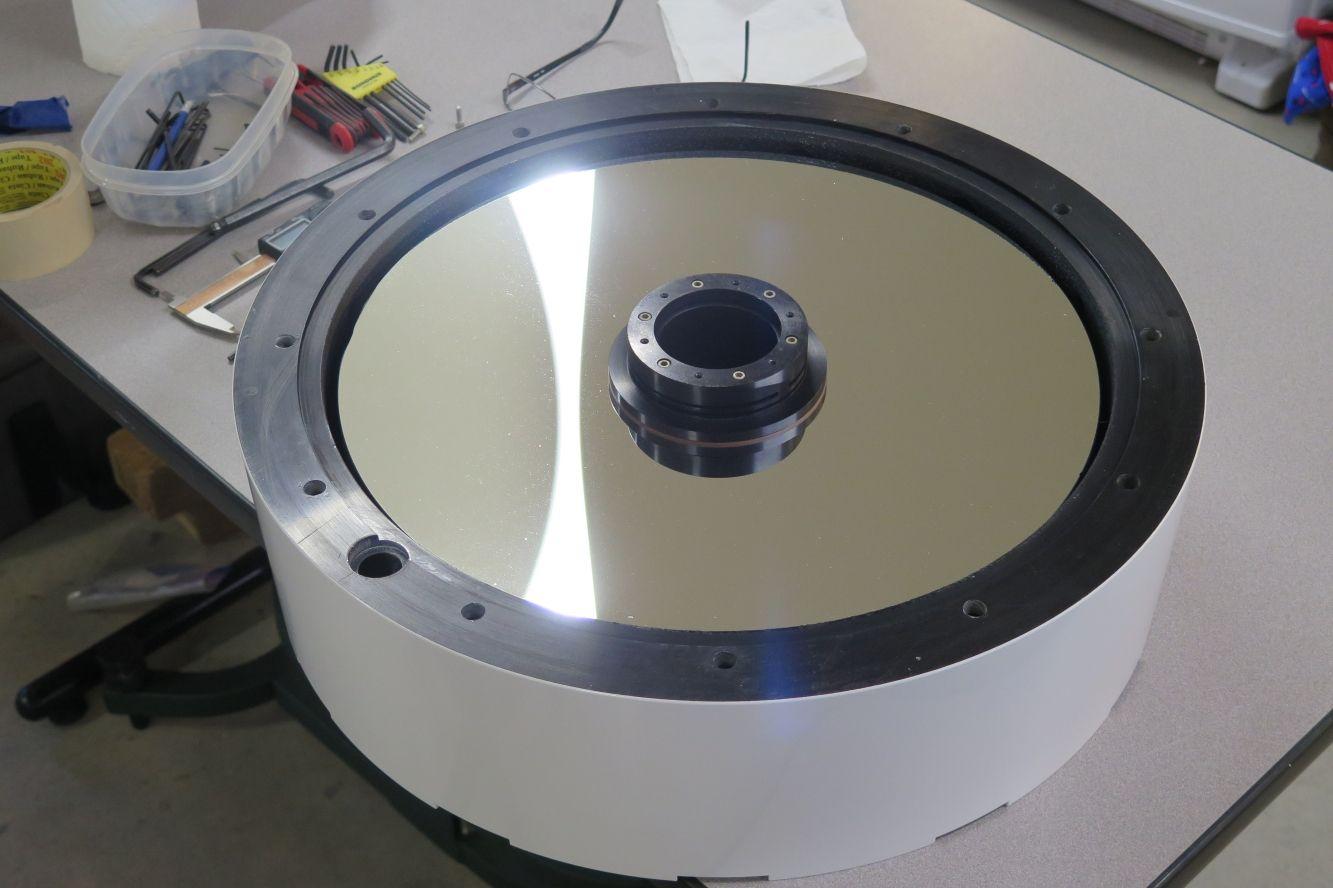 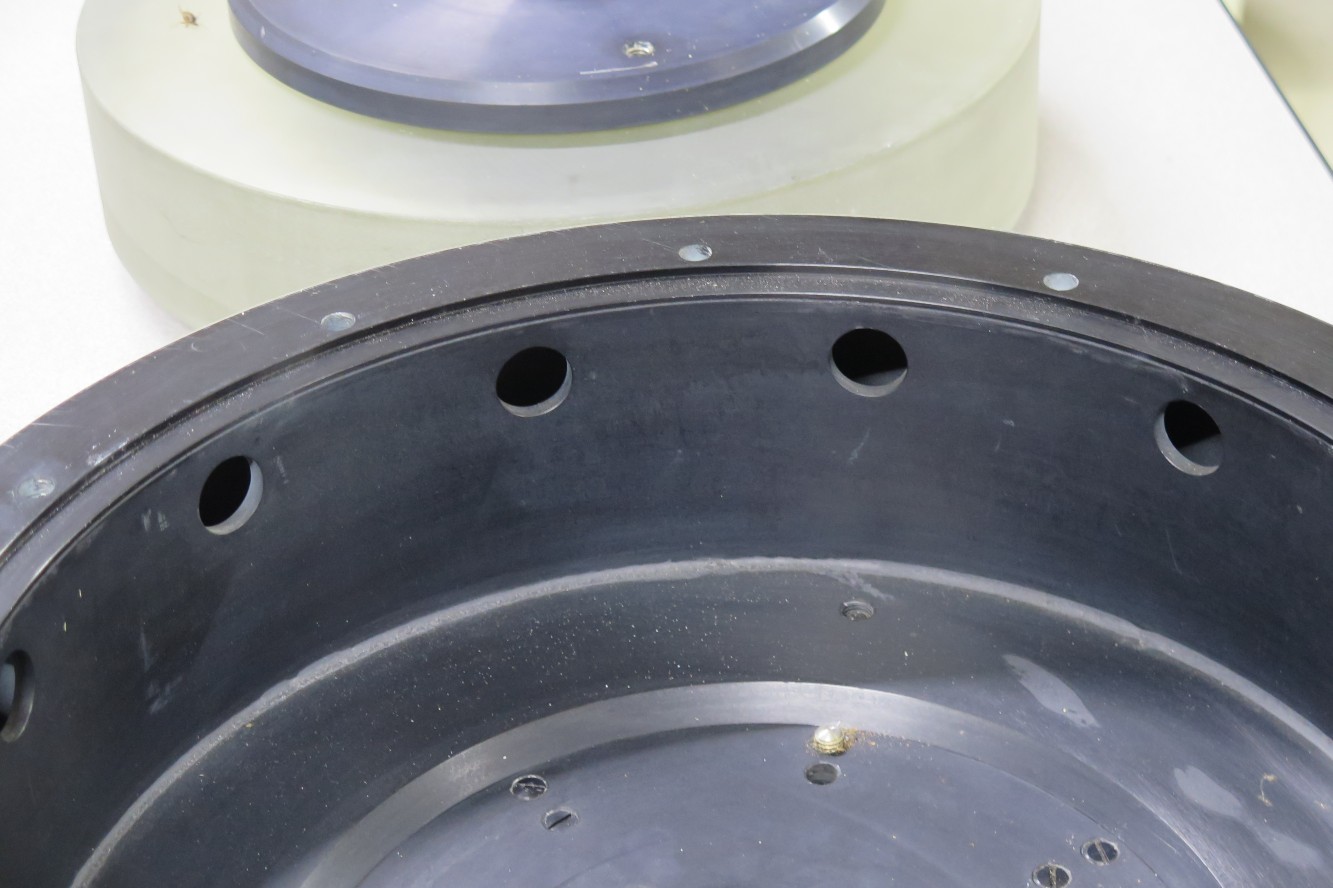 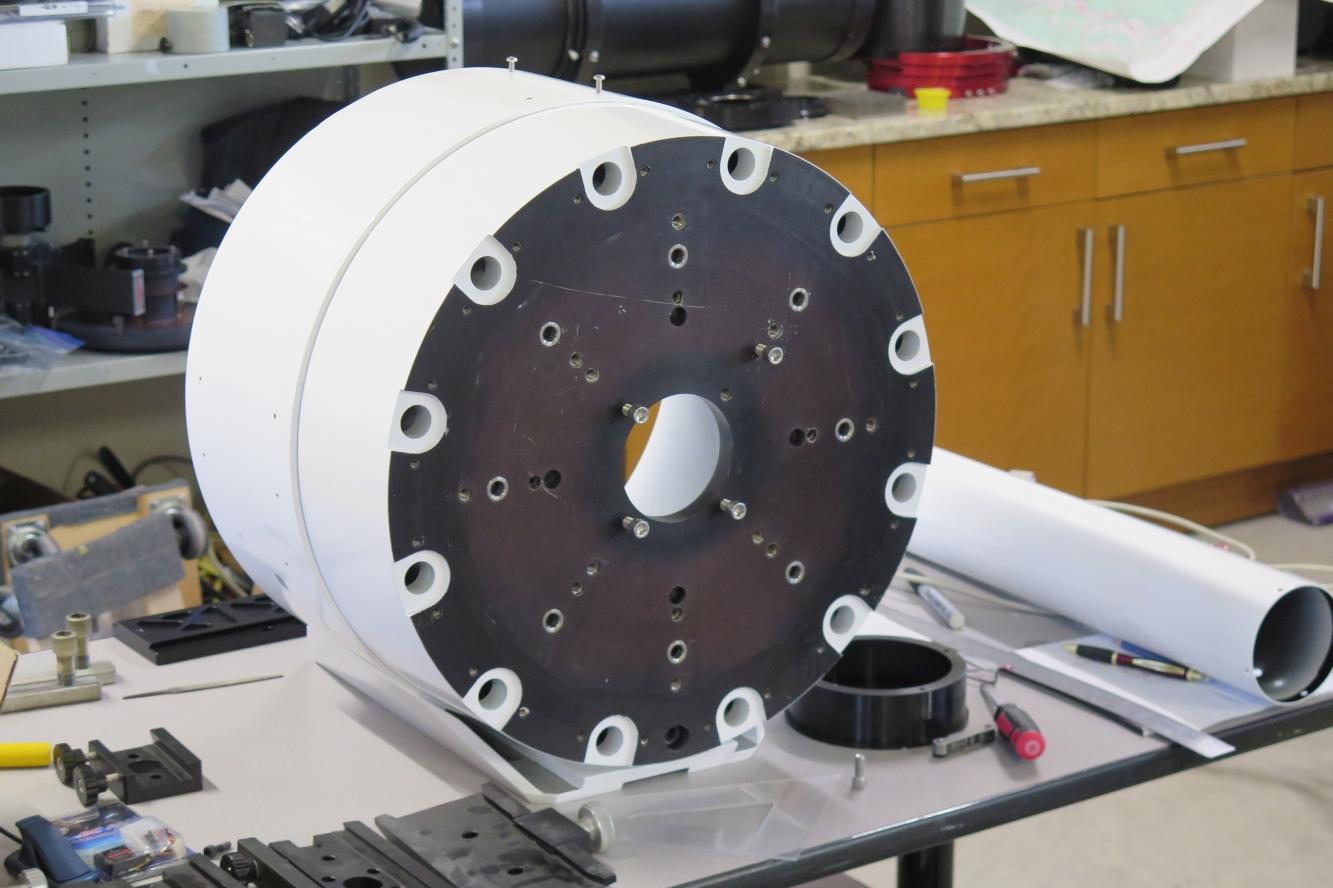 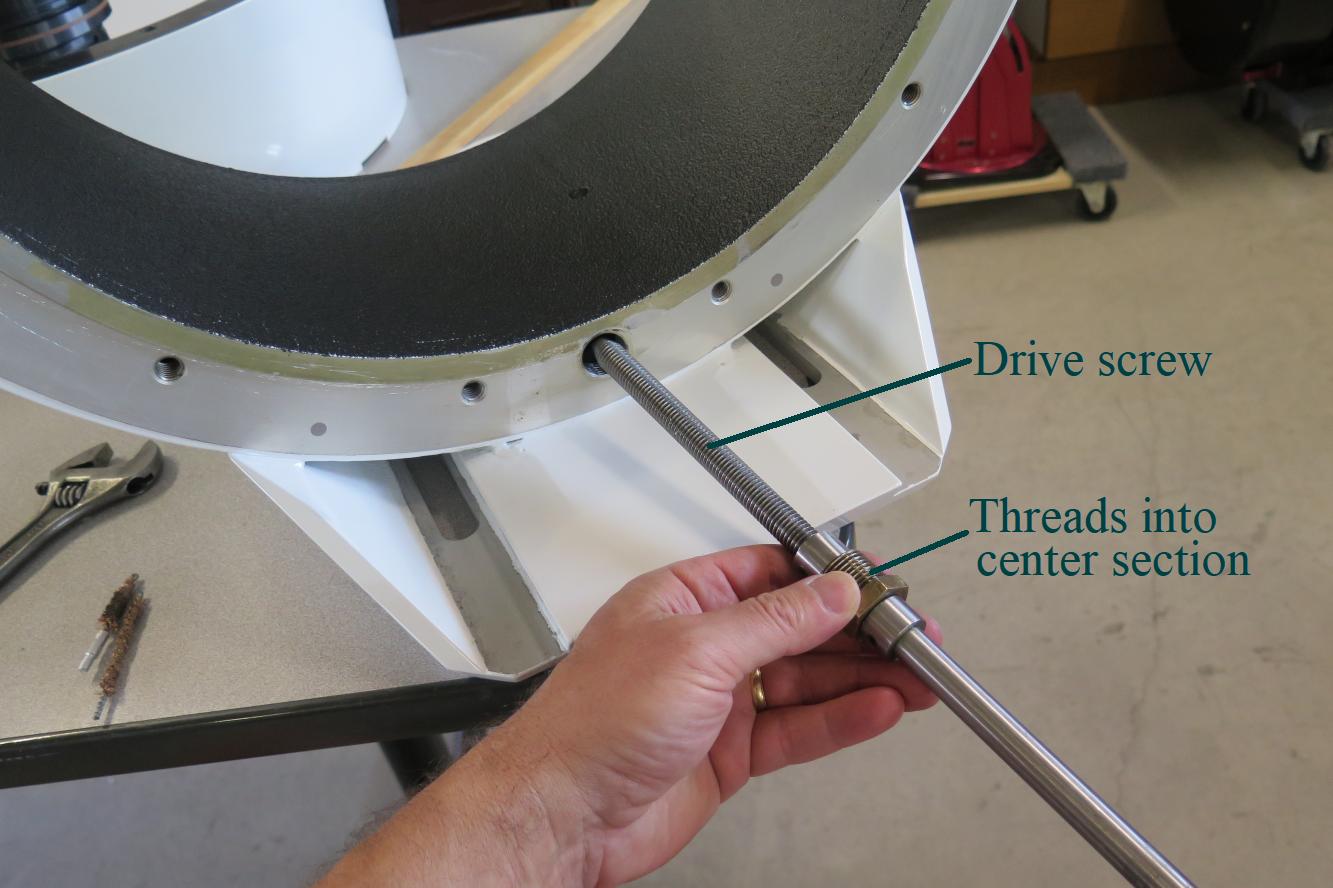 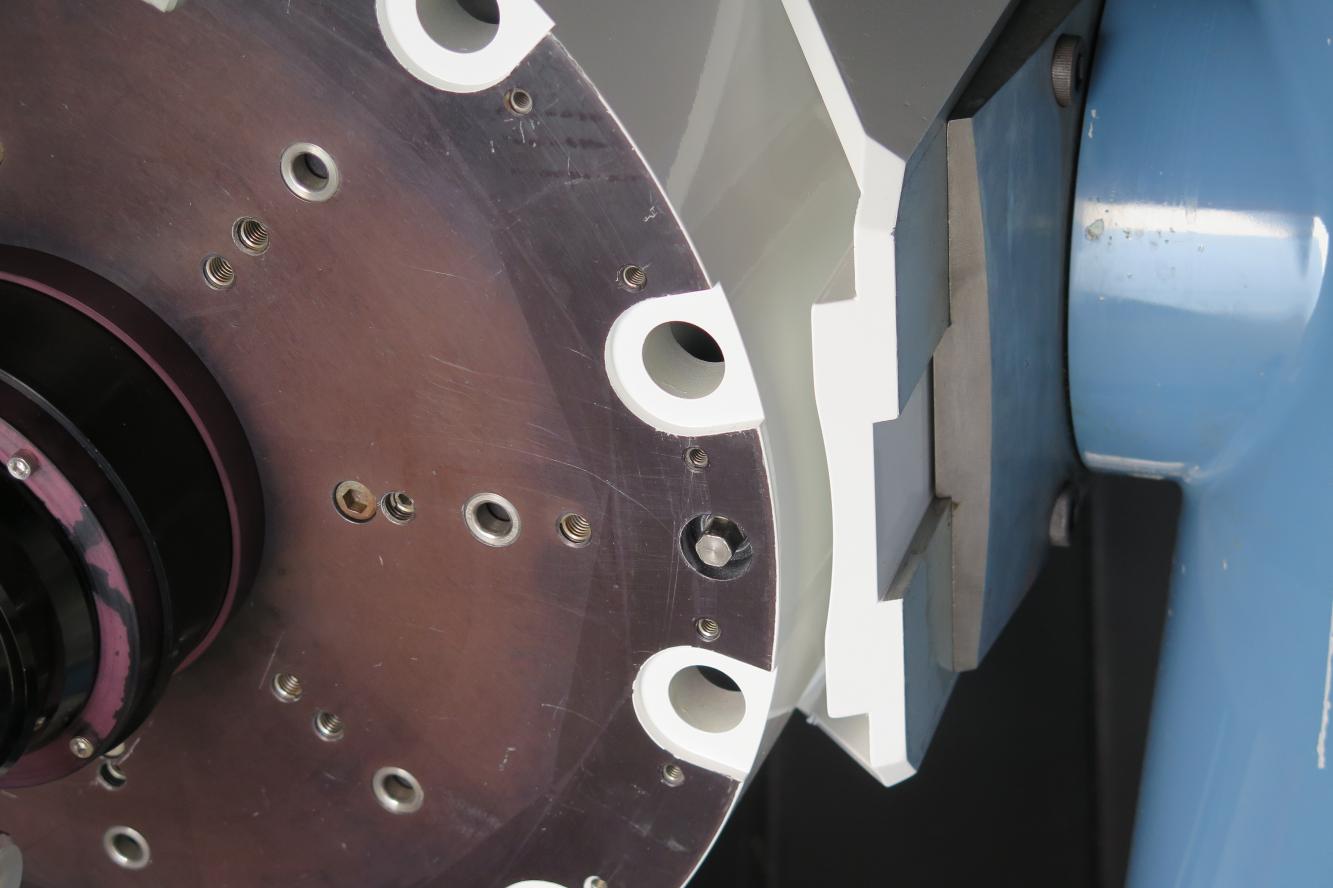 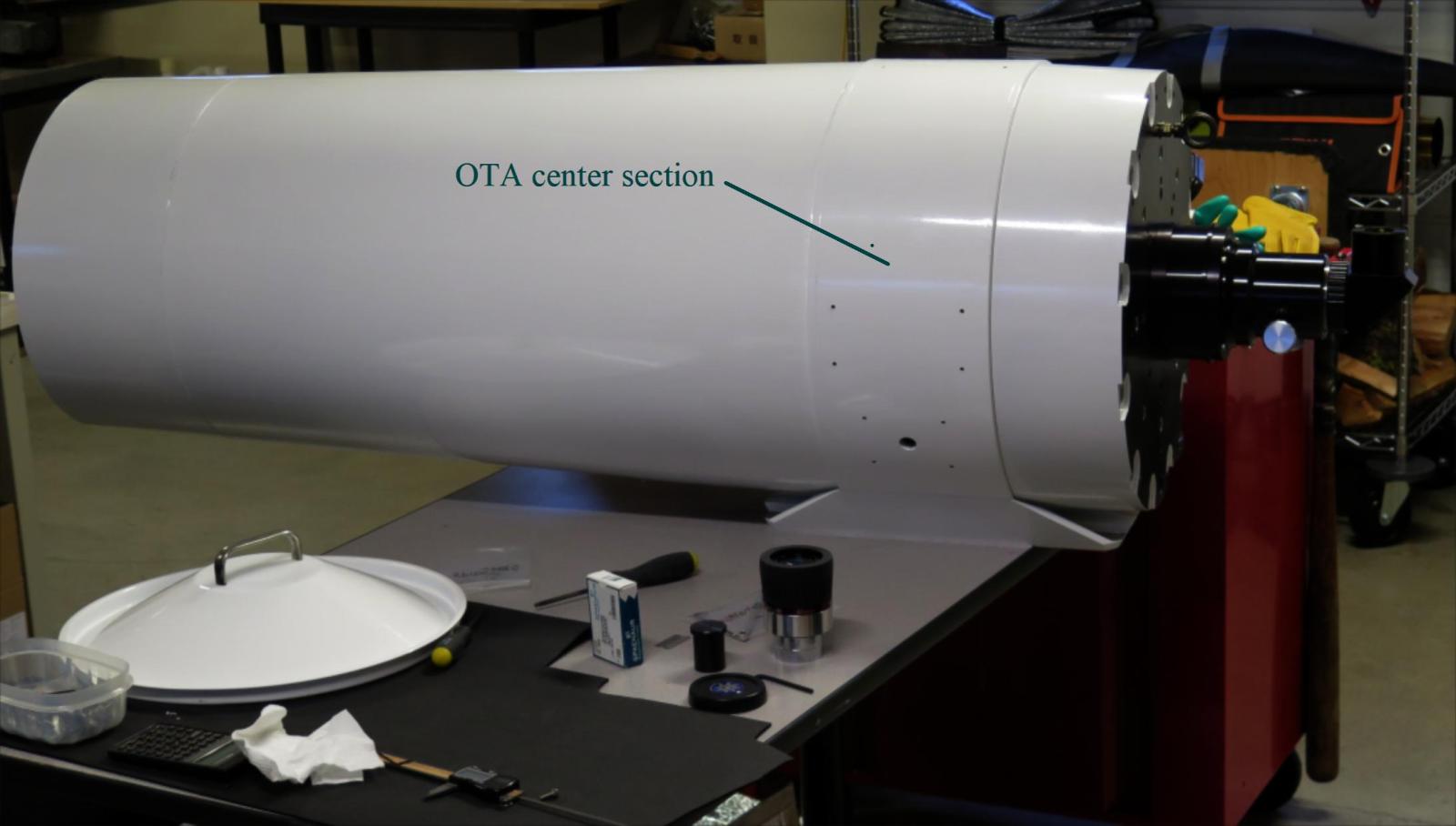 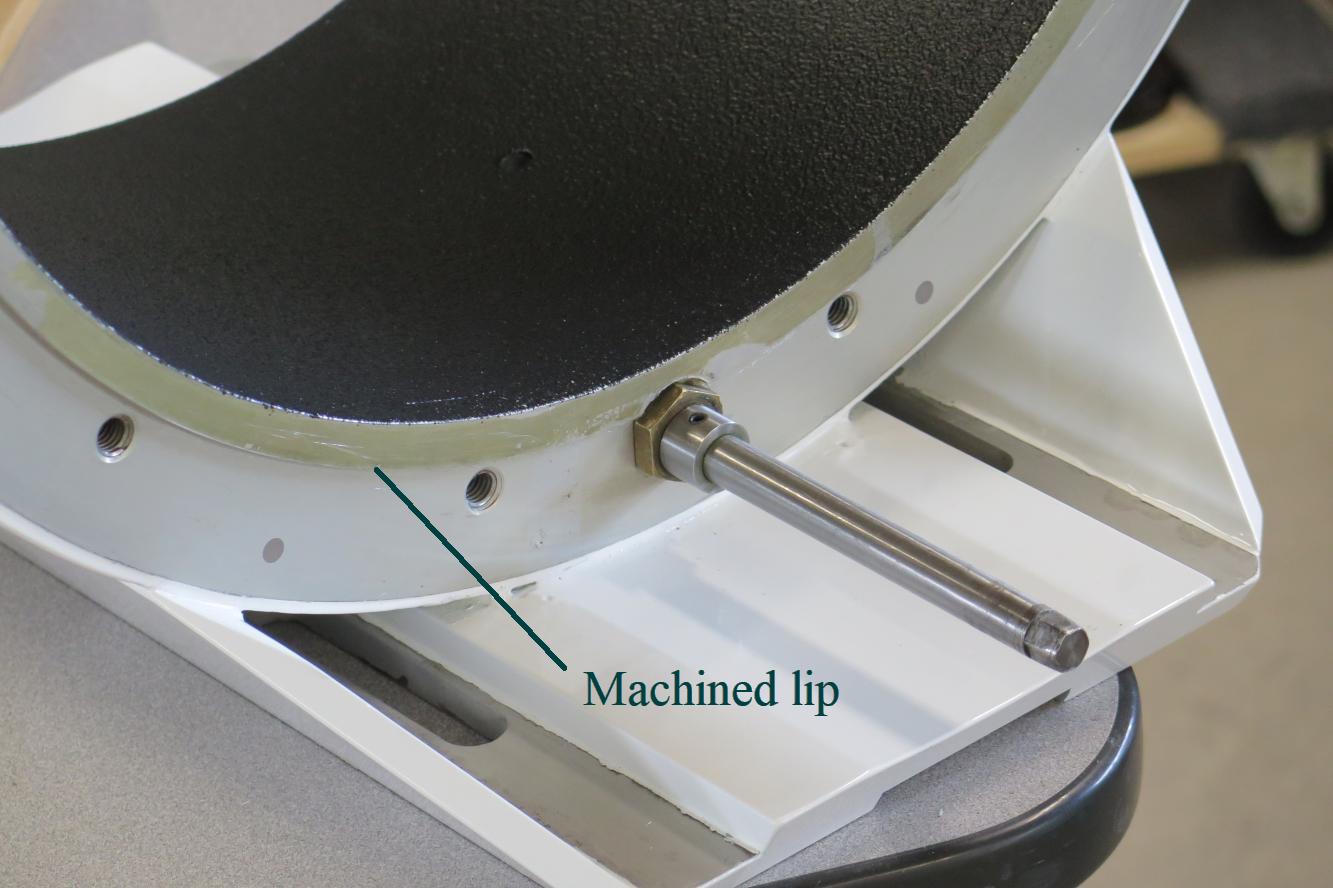 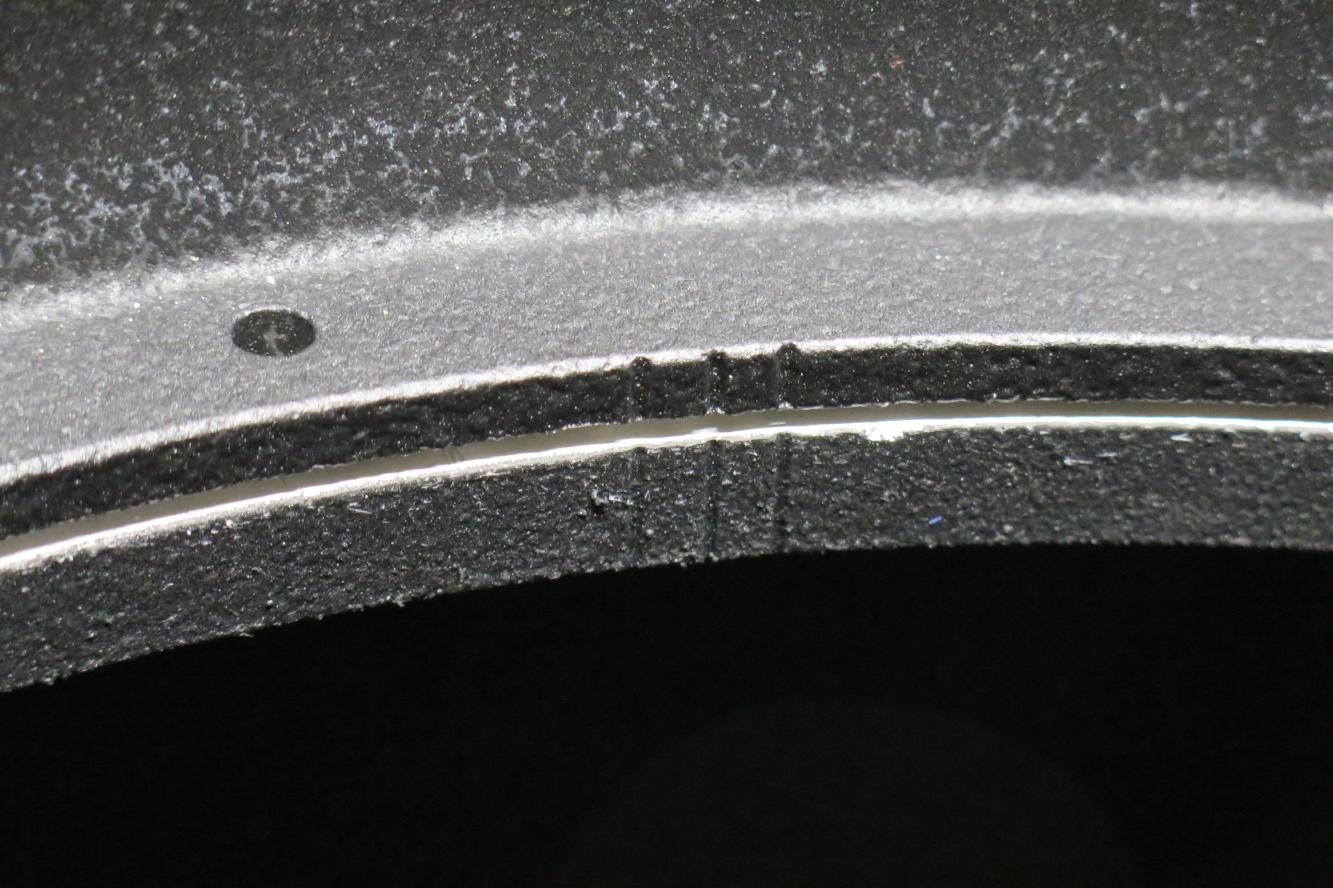 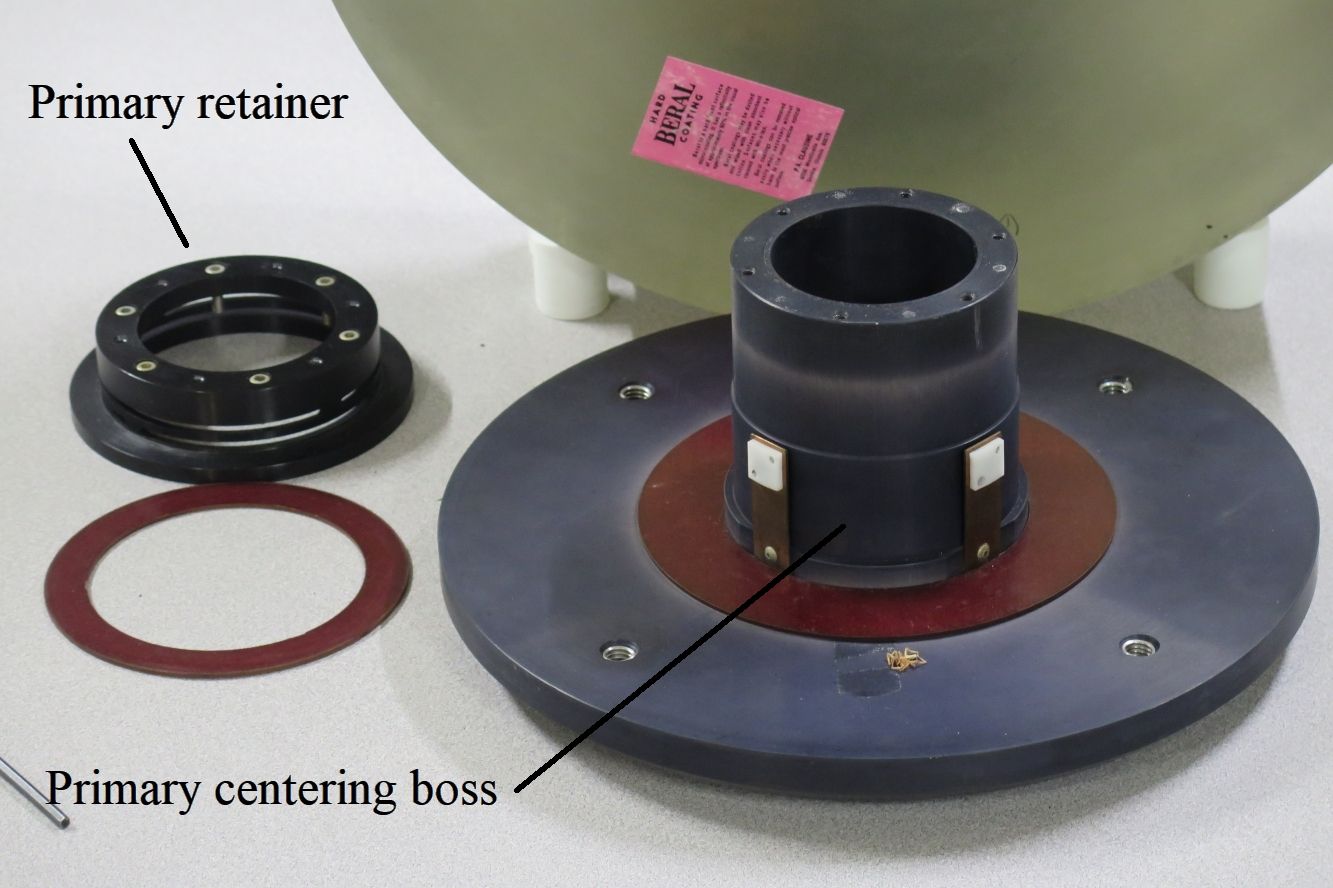 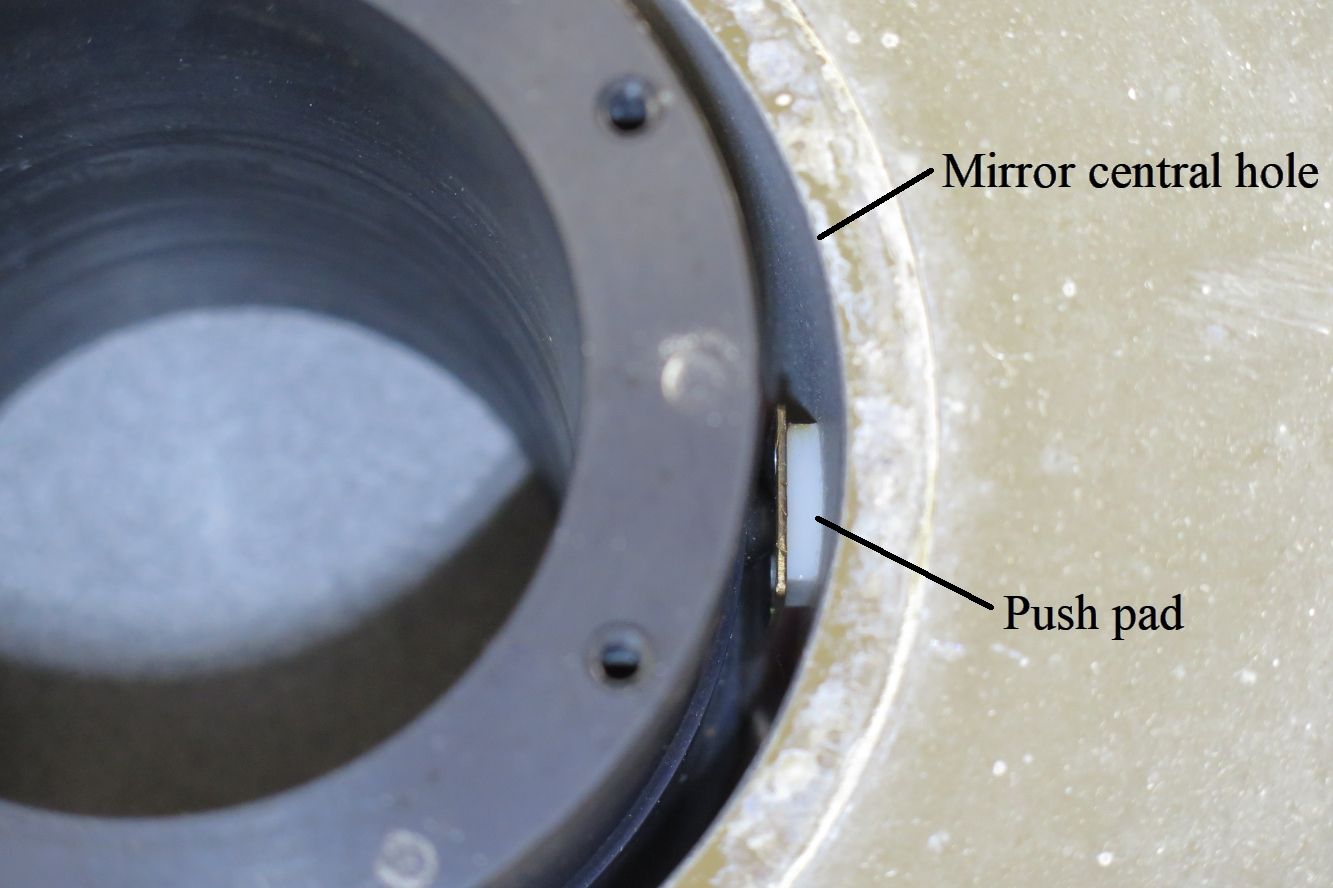 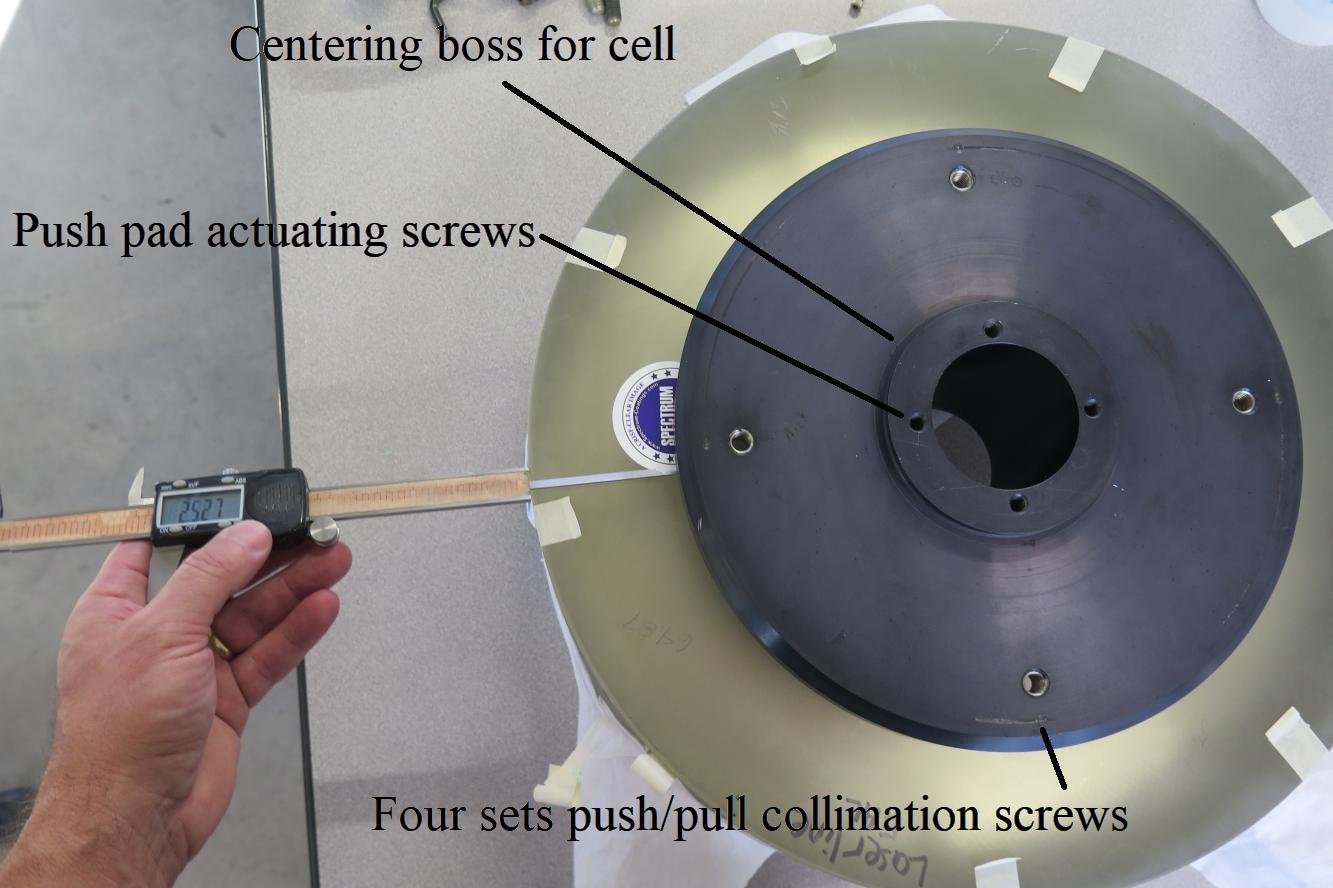 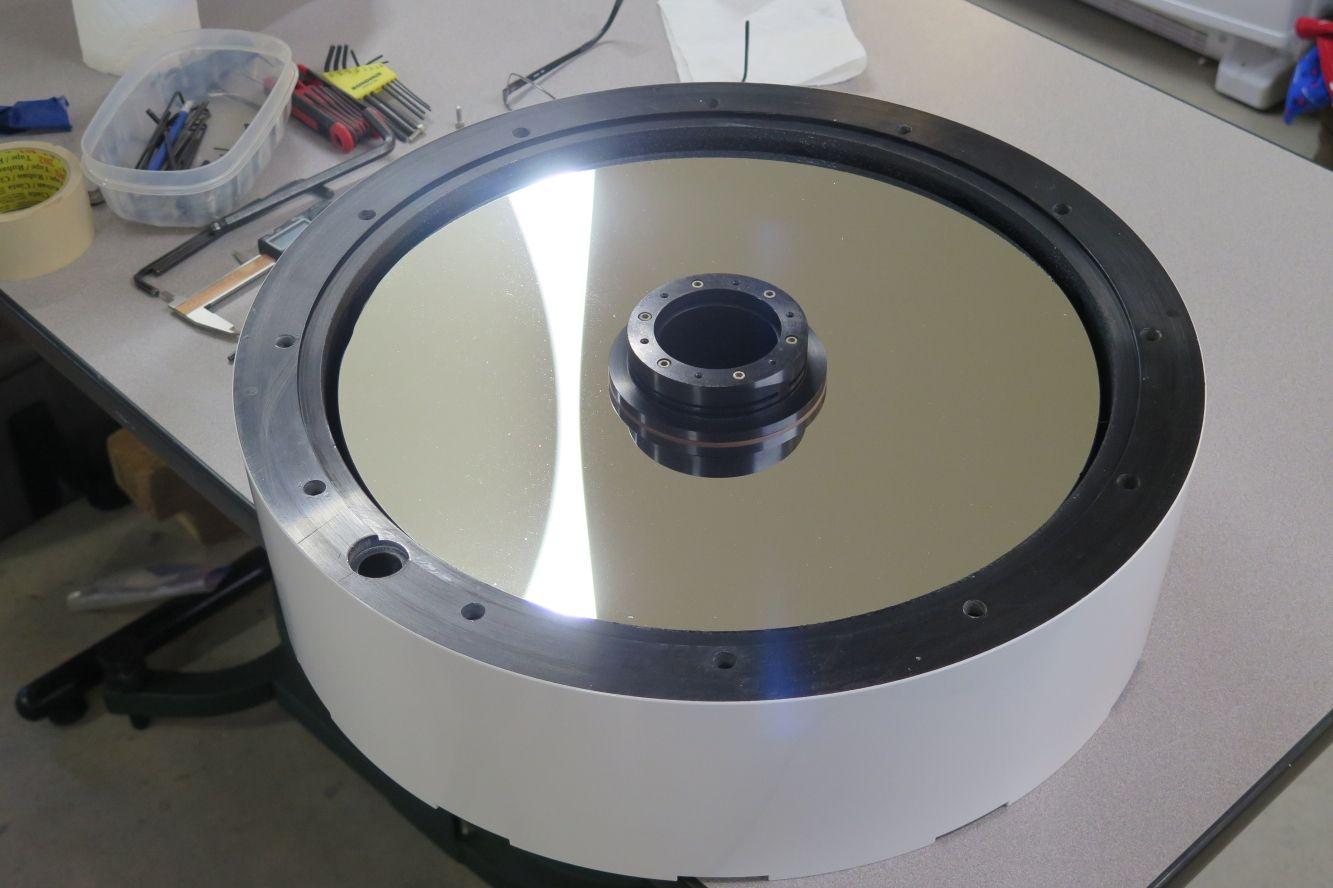 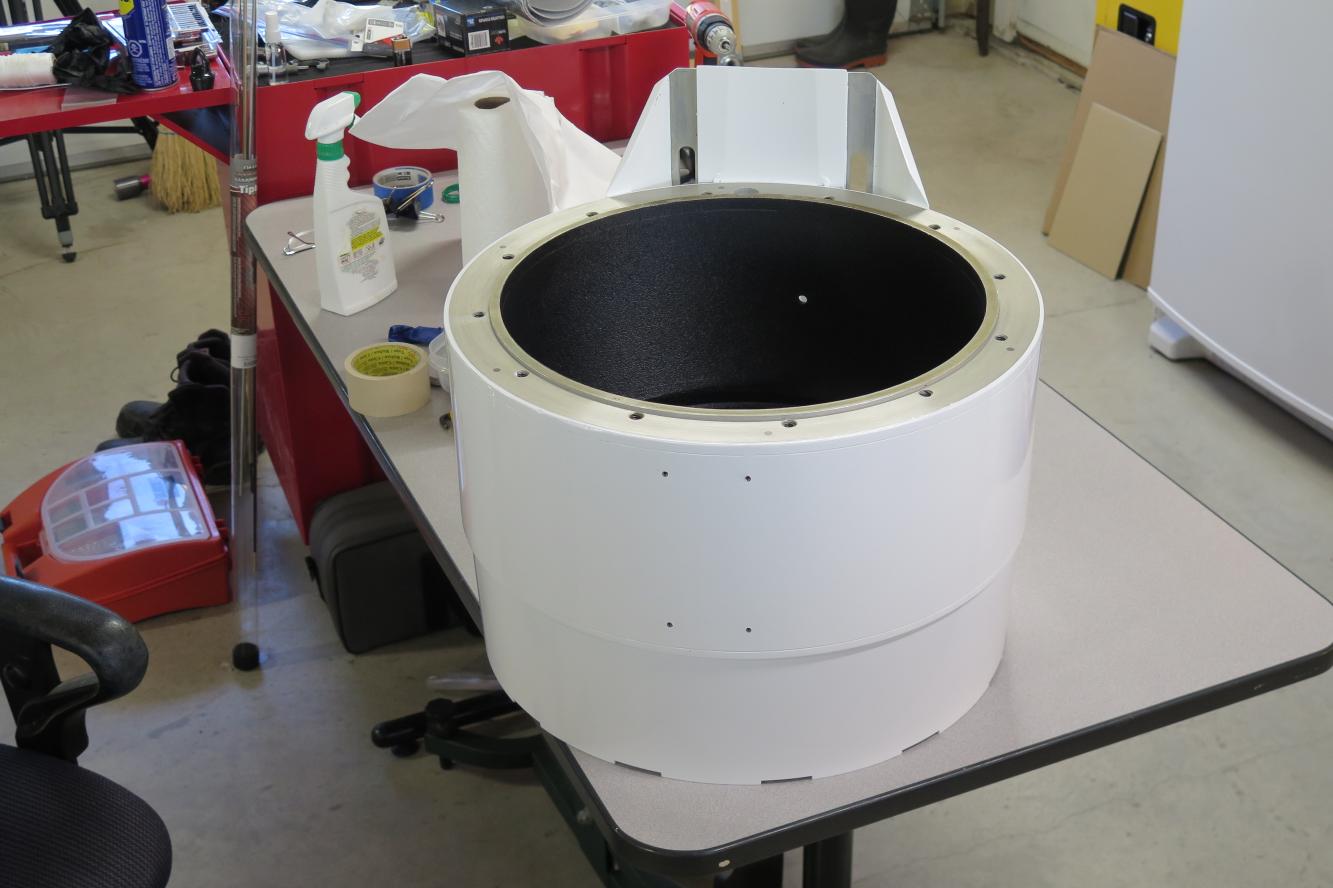 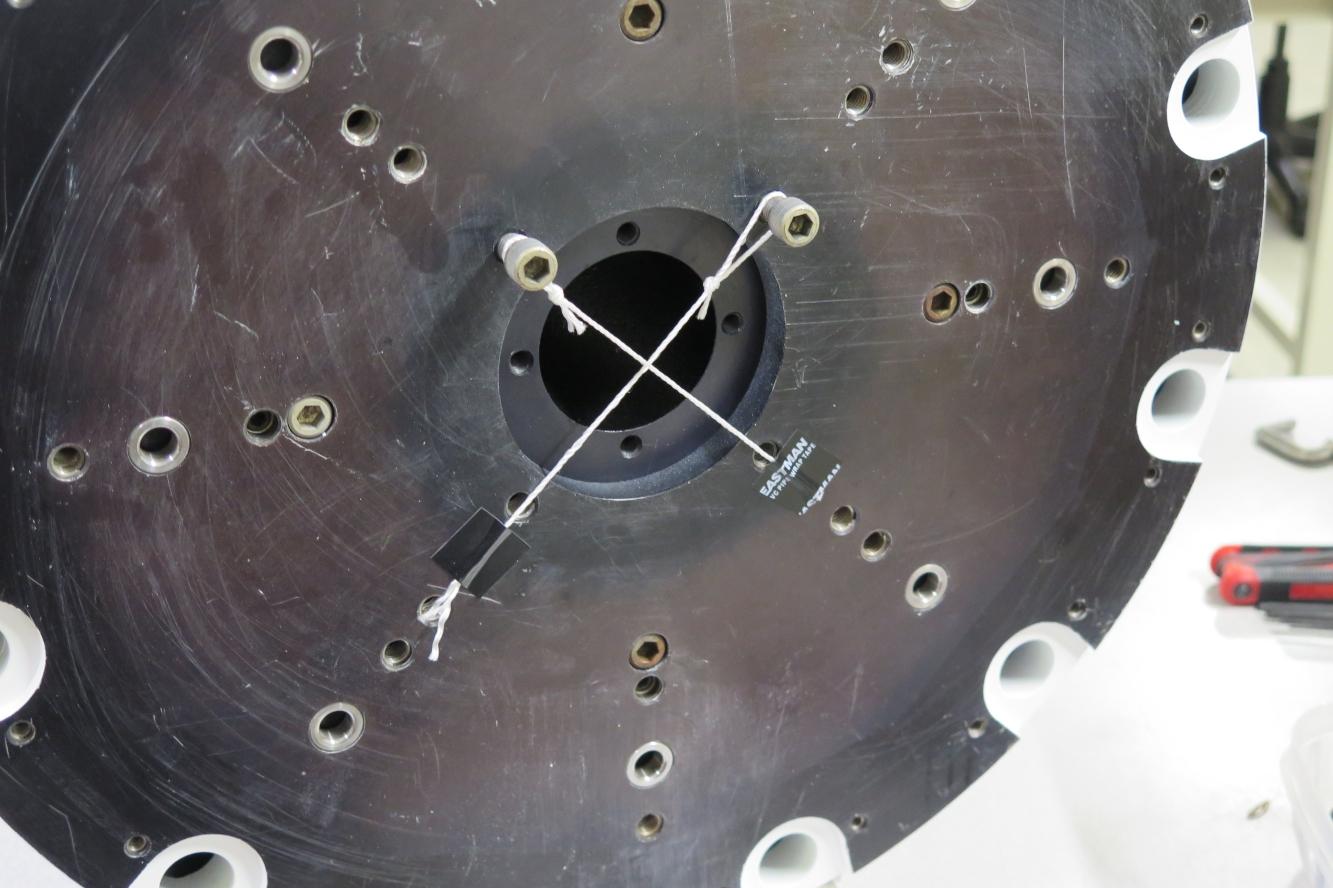 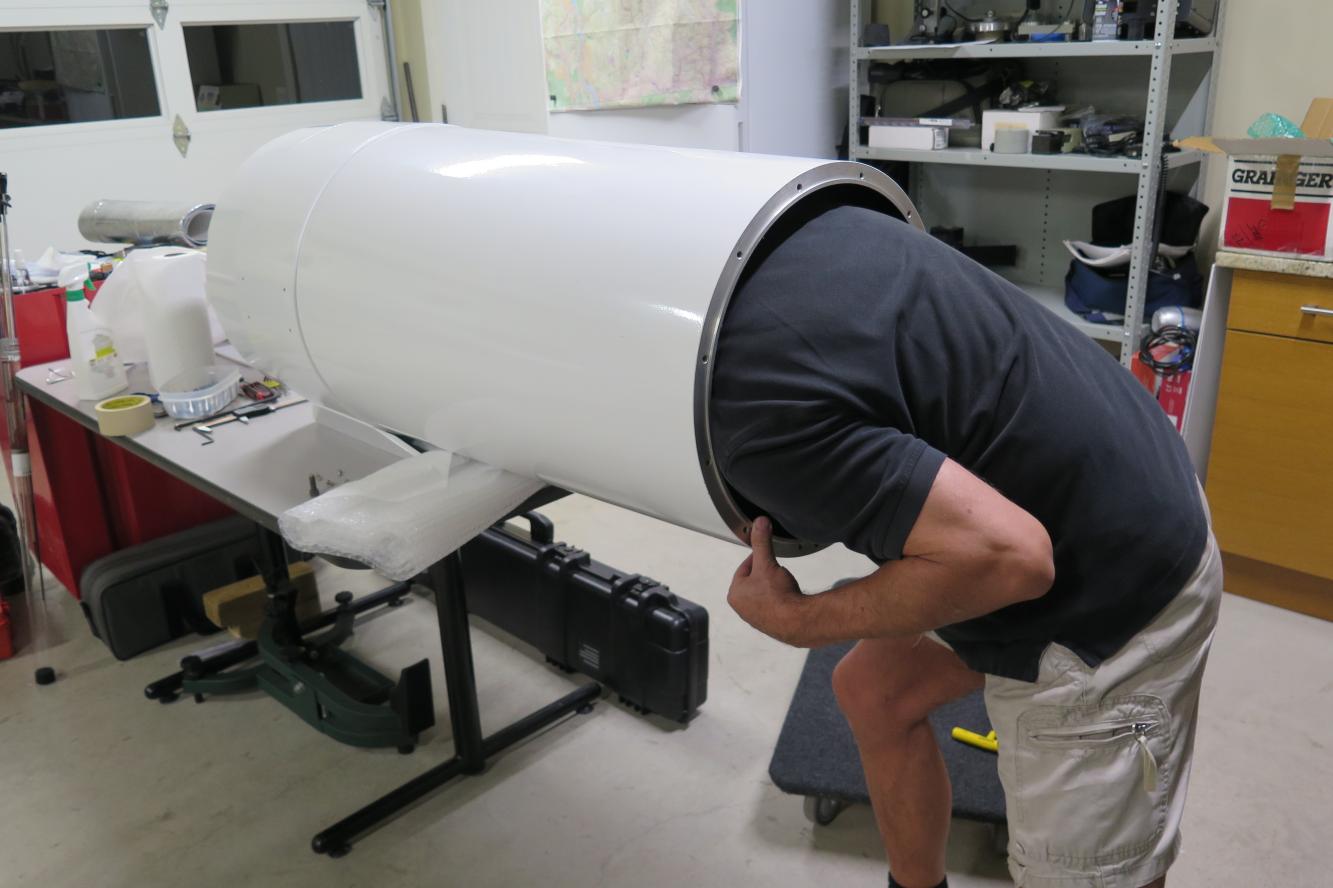 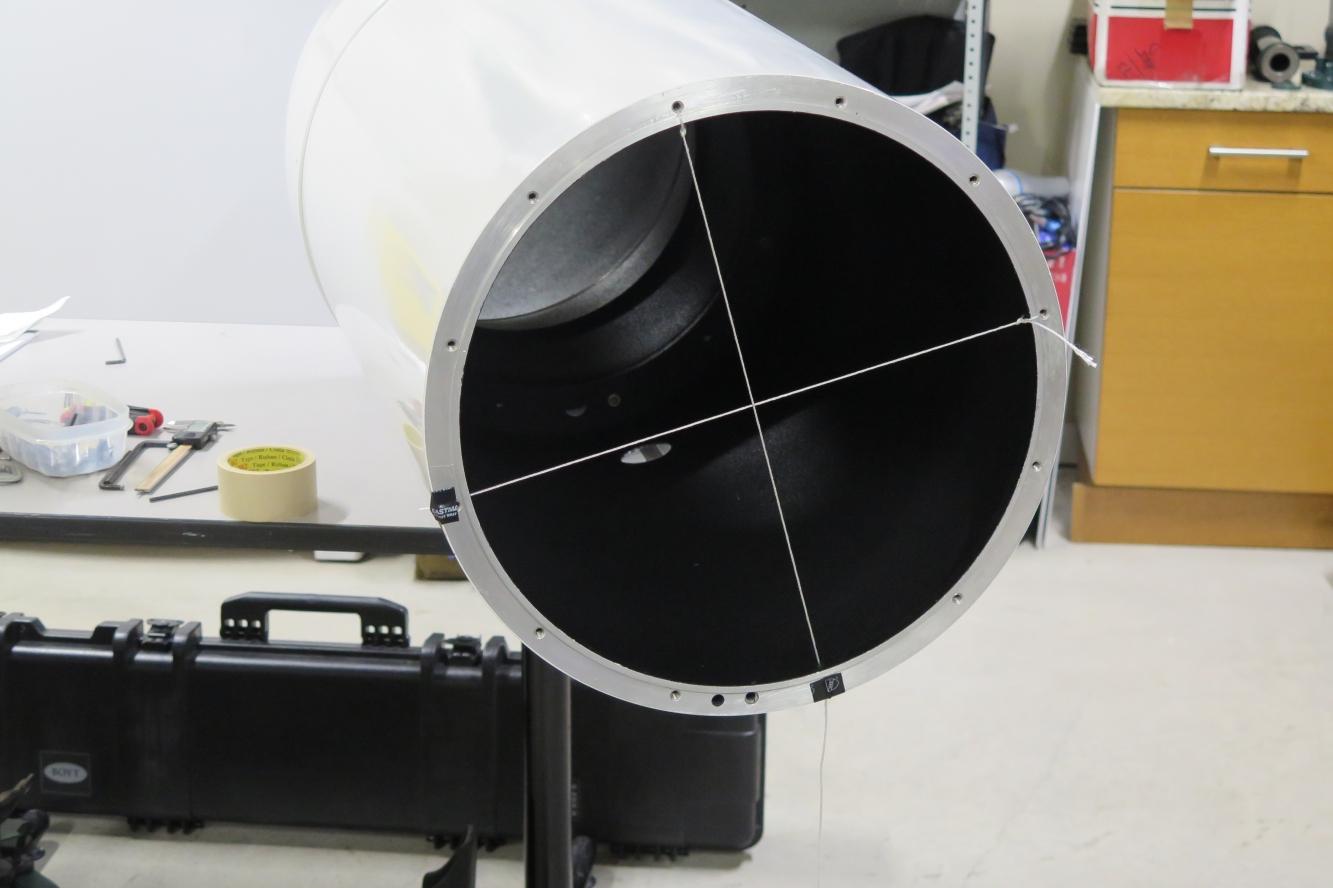  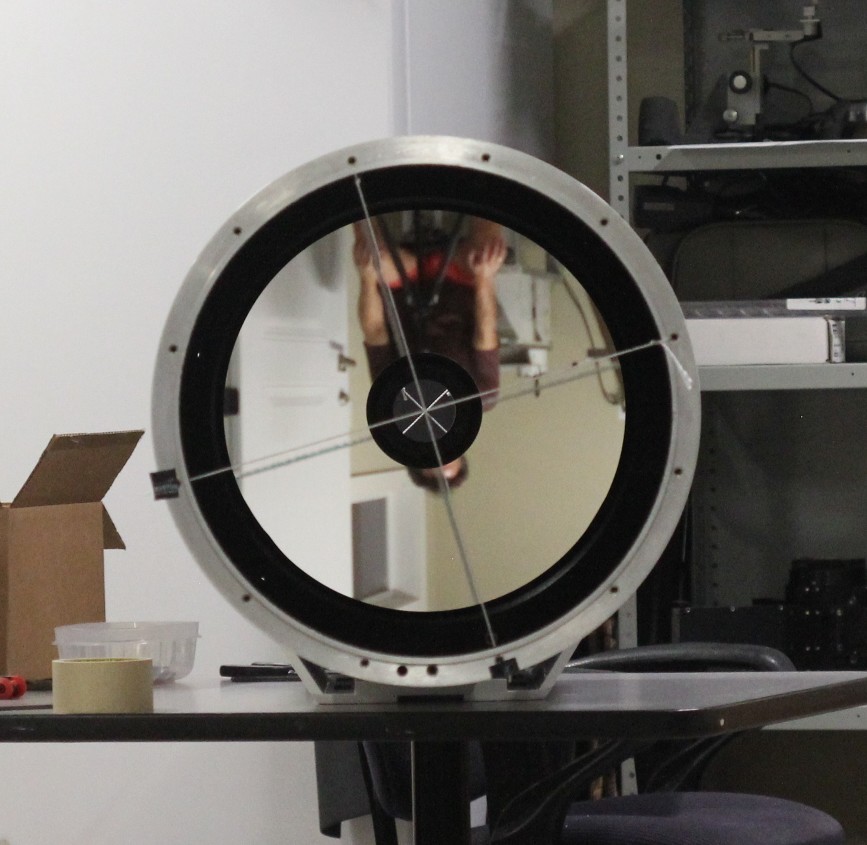 |
|
|
|
|
|


